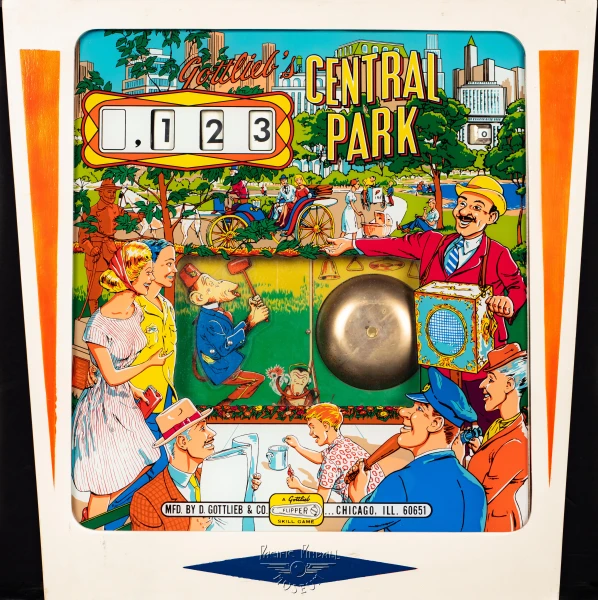Central Park
Central Park Preview Image

Machine Details
Manufacturer
n/a
Year
n/a
Technology Era
n/a
Machine Description
Content Under Review
Help us improve this content
Your support accelerates our content verification efforts.
Support Our WorkCentral Park, released by D. Gottlieb & Co. in 1966, represents a classic example of mid-1960s electro-mechanical pinball design that captured the essence of one of America's most famous urban spaces. The machine celebrated New York City's iconic Central Park, featuring artwork and themes inspired by the park's recognizable landmarks and recreational activities.
The playfield design incorporated various park-themed elements including pathways, fountains, and gathering spaces that were converted into pinball features. As was typical for machines of this era, it featured mechanical score reels, bells, and chimes that created the distinctive sound profile of electro-mechanical pinball games. The gameplay emphasized traditional pinball elements like bumpers, targets, and rollovers, arranged to represent different areas of the actual Central Park.
While not necessarily groundbreaking in terms of technological innovation, Central Park represented the golden age of electro-mechanical pinball when themed machines were becoming increasingly sophisticated in their artistic presentation and thematic integration. The machine helped establish the tradition of city-themed pinball games, which would become a recurring subject matter throughout pinball history.
Production numbers for Central Park are not definitively known, but like many Gottlieb machines of this period, it likely saw a moderate production run for the era, possibly in the range of 2,000-4,000 units. Today, Central Park is considered a collectible piece that represents both the artistic and mechanical capabilities of mid-1960s pinball manufacturing.